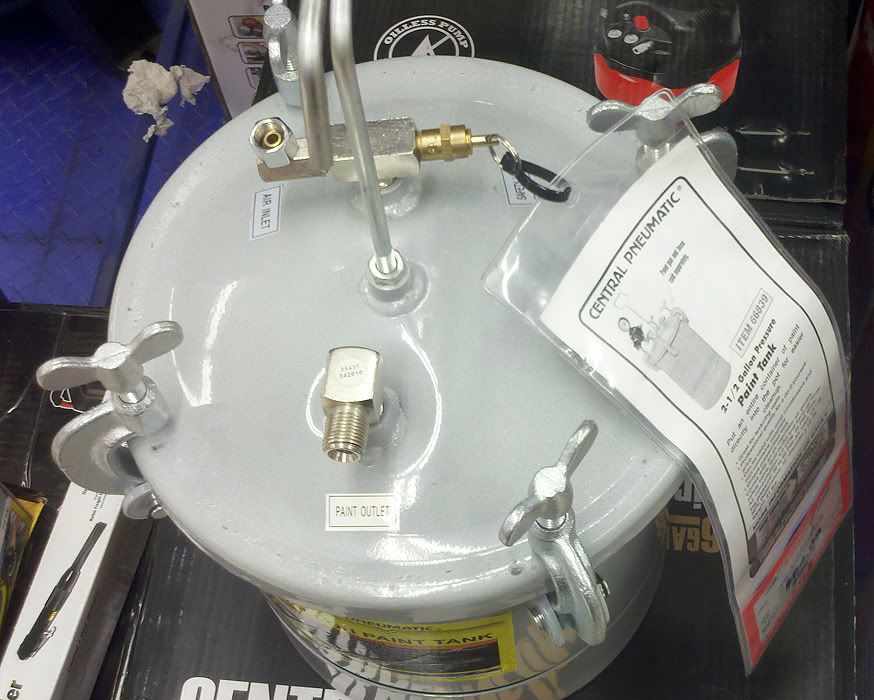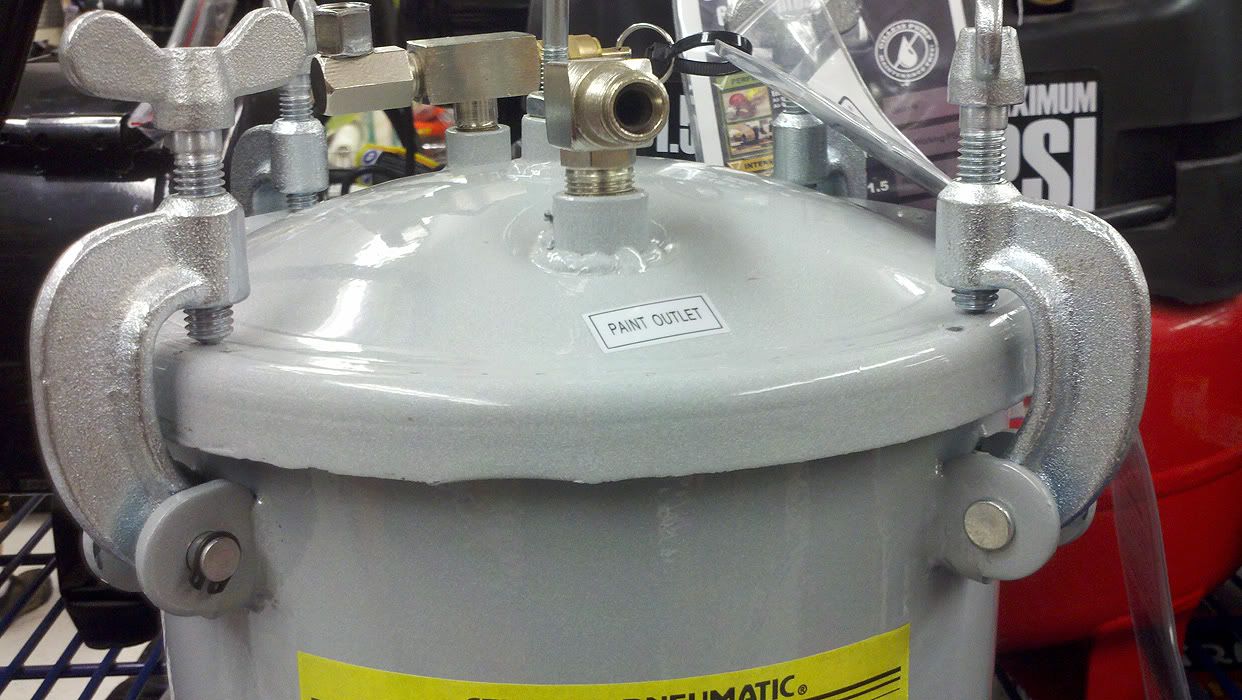Aren't the clamp styles of the Binks and HF pots similar though?
Yes, as I said above, the HF is a cheap clone of the Binks pot. The clamps are not an issue, however. It is the cheap, flimsy steel the lid is made from on the HF that is the issue. When using an HF pot repeatedly, if you tighten the clamps in the same spot, you will create a dimple in the lid. With the Binks pot, this is not an issue no matter how much you tighten the clamps. The thin steel on the HF pot lid can also flex and distort but the Binks is so thick it will not.
Your mileage may vary but for me, if I am going to be creating a potential bomb in my shop every time I put air in one of these things, I sure as hell don't want to trust cheap Chinese steel and manufacturing! My life and limbs are worth more than the extra money I paid for a good setup. Once you have had one blow, even if it is possibly due to your modifications like my explosion was, you will never want to trust you life to cheap again!


